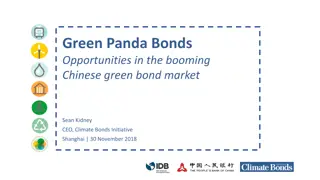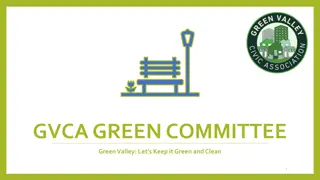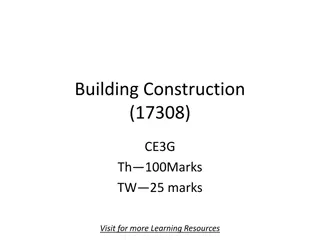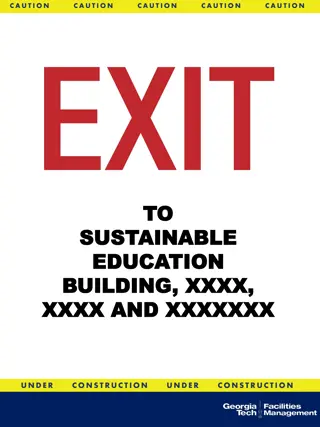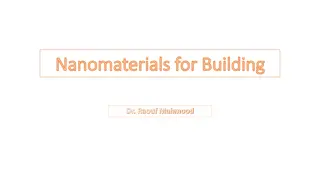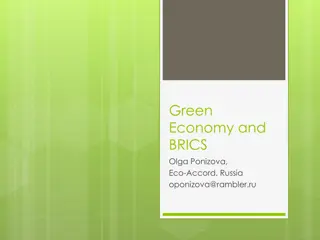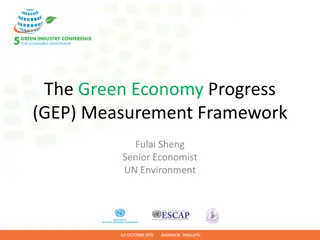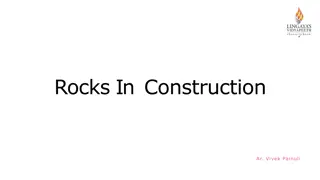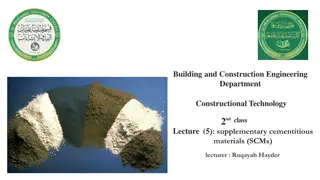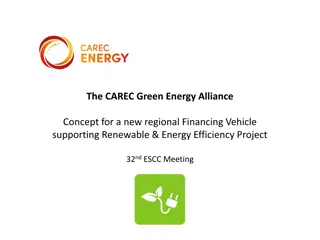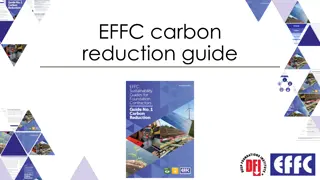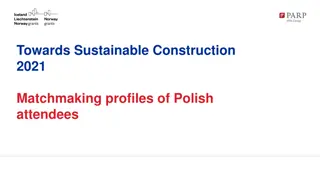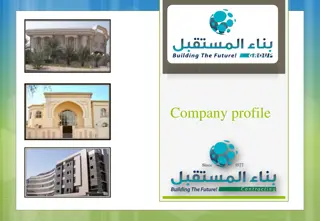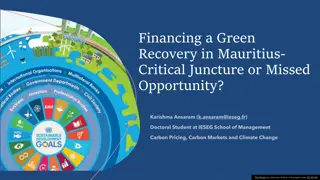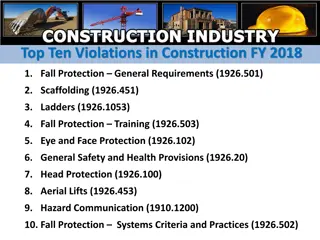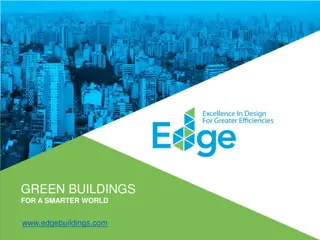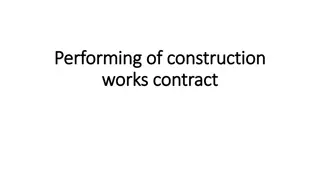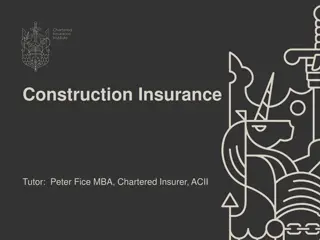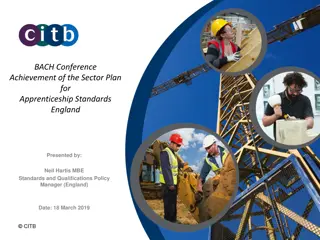Top New Green Building Materials for Sustainable Construction
Discover some of the top new green building materials for sustainable construction, including straw bale, bamboo, cork, cordwood, rammed earth, ash-crete, and timber. These materials offer energy efficiency, sustainability, affordability, and innovative ways to reduce environmental impact in construction projects.
- Green building
- Sustainable construction
- Eco-friendly materials
- Green architecture
- Renewable resources
Download Presentation

Please find below an Image/Link to download the presentation.
The content on the website is provided AS IS for your information and personal use only. It may not be sold, licensed, or shared on other websites without obtaining consent from the author. Download presentation by click this link. If you encounter any issues during the download, it is possible that the publisher has removed the file from their server.
E N D
Presentation Transcript
Some Top New Green Building Materials
STRAW/STRAW BALE typical for Africa affordable and sustainable,popularity is Increasing rapidly. energy-efficient material with good thermal insulating property. Since air cannot pass through the straw bale, it is a soundproof material. available everywhere in the world.
BAMBOO bamboo is one of the biggest natural building materials in the world. It is a fast-growing plant and can be great sustainable material. These are very durable and strong materials We can easily install them Bamboo absorbs more amount of oxygen than other trees, as the growth rate is faster. This is an affordable material and can be used widely. Bamboo also used in earthquake-prone areas due to their lightweight nature.
CORK natural, renewable, recyclable raw material that helps in the reduction of harmful greenhouse gases. due to the thermal insulation property of the cork, it is gaining popularity. waterproof, lightweight, and resistant to moisture. using cork we can increase the quality of air, and comfort. in recent years innovation and development of composite cork.
use of round and short wood pieces, so these wood pieces don t have much other value. have both Insulation and thermal mass. constructed with less initial cost than other wooden framed houses. the properties of cordwood are mostly similar to natural wood available everywhere. CORDWOOD
RAMMED EARTH constructed by compacting the moisture subsoil earth material between the temporary formwork panels. When dried they gain stability and strength. traditional way of construction, natural and readily available material. recyclable material as the soil is again used after demolition. low energy material and has greater thermal mass. fireproof material
ASH-CRETE ash-crete is nothing but using fly ash instead of cement in the production of concrete. waste product released after the burning of charcoal and it is a non- biodegradable material. requires less amount of water than cement in the production process. cheaper and eco-friendly with the usage of ash-crete, we can increase the strength and durability of concrete while decreasing its permeability.
TIMBER Thousands of years ago, wood was the second most populous and most used material next to the stone. 100% natural material, directly taken from the trees, so no fossil fuels are required to manufacture the material. nowadays, we recently introduced CLT(cross-laminated timber) easily processed and these prefabricated panels can be brought to the site and installed efficiently without wasting the material. cost-effective material and can be easily recycled.
STONE durable and resistant to weathering, very sustainable and durable Weatherproof, and consumes less energy for construction and maintenance. harsh chemicals and wall coatings are not required for stone. recyclable material and we can use 100% of the stone from old projects by recycling. .widely available, but expensive to transport



